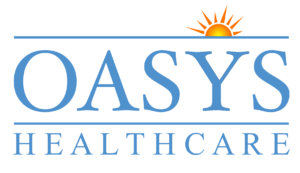Introduction
The medical equipment manufacturing industry plays a pivotal role in healthcare by producing essential tools and devices for diagnosis, treatment, and monitoring of patients. As technology continues to advance and healthcare demands evolve, the industry faces constant changes and challenges. In 2023, several trends emerged that significantly impacted the landscape of medical equipment manufacturing. This report aims to analyze these trends and their implications on the industry.
1. Advancements in Technology
One of the prominent trends in 2023 was the continued advancements in technology within the medical equipment manufacturing industry. Technologies such as artificial intelligence (AI), robotics, and Internet of Things (IoT) have increasingly been integrated into medical devices, enhancing their efficiency, accuracy, and usability.
AI-powered diagnostic tools gained traction in 2023, enabling healthcare professionals to analyze medical images, interpret data, and assist in decision-making processes with greater precision. Additionally, robotics found applications in surgical procedures, rehabilitation, and telemedicine, leading to improved patient outcomes and reduced healthcare costs.
Furthermore, IoT-enabled devices revolutionized remote patient monitoring, allowing healthcare providers to remotely track patients’ vital signs and health metrics in real-time. This trend not only enhanced patient care but also facilitated early intervention and preventive measures.
2. Personalized Medicine
The concept of personalized medicine gained momentum in 2023, driving innovation in the medical equipment manufacturing sector. Personalized medicine focuses on tailoring medical treatment to individual characteristics, such as genetics, lifestyle, and environment, to improve efficacy and reduce adverse effects.
Medical equipment manufacturers responded to this trend by developing diagnostic tools and treatment devices that enable precise and targeted therapies. Advancements in genomics and molecular diagnostics further supported the shift towards personalized medicine, enabling healthcare providers to identify genetic markers and biomarkers associated with specific diseases.
The adoption of personalized medicine not only revolutionized patient care but also presented new opportunities for medical equipment manufacturers to develop innovative solutions tailored to individual patient needs.
3. Focus on Patient Safety and Regulatory Compliance
In 2023, there was an increased emphasis on patient safety and regulatory compliance within the medical equipment manufacturing industry. Stricter regulations and quality standards were implemented to ensure the safety, efficacy, and reliability of medical devices.
Manufacturers were required to adhere to rigorous quality management systems and regulatory frameworks, such as ISO 13485 and FDA regulations, throughout the product lifecycle. This trend led to enhanced scrutiny of manufacturing processes, supply chain management, and post-market surveillance activities.
Moreover, there was a growing demand for transparency and accountability from medical equipment manufacturers regarding the safety and performance of their products. Adverse event reporting, risk management, and post-market surveillance became integral aspects of the regulatory landscape, prompting manufacturers to invest in robust quality assurance and compliance programs.
4. Adoption of Sustainable Practices
Sustainability emerged as a key trend in the medical equipment manufacturing industry in 2023, driven by growing environmental concerns and regulatory pressures. Manufacturers increasingly focused on reducing the environmental footprint of their operations, from product design and manufacturing to packaging and distribution.
Efforts were made to optimize energy efficiency, minimize waste generation, and utilize eco-friendly materials in the production of medical devices. Furthermore, there was a shift towards reusable and recyclable products, as opposed to single-use disposable devices, to reduce environmental impact and promote resource conservation.
The adoption of sustainable practices not only aligned with corporate social responsibility initiatives but also resonated with environmentally conscious consumers and healthcare providers. Manufacturers that embraced sustainability gained a competitive edge and contributed to the overall sustainability goals of the healthcare industry.
5. Expansion of Telehealth and Remote Monitoring
The COVID-19 pandemic accelerated the adoption of telehealth and remote monitoring technologies in 2023, transforming the way healthcare services are delivered and accessed. Telehealth platforms and remote monitoring devices enabled patients to receive medical care remotely, reducing the need for in-person visits and minimizing exposure to infectious diseases.
Medical equipment manufacturers responded to this trend by developing innovative telehealth solutions, such as virtual consultation platforms, remote patient monitoring devices, and wearable sensors. These technologies facilitated continuous monitoring of patients’ health status, timely intervention, and improved management of chronic conditions.
Furthermore, the integration of telehealth and remote monitoring into existing healthcare systems expanded access to healthcare services, particularly in underserved communities and rural areas. This trend not only improved patient outcomes but also contributed to the efficiency and sustainability of healthcare delivery.
Conclusion
The medical equipment manufacturing industry experienced significant transformations in 2023, driven by technological advancements, shifts in healthcare practices, and evolving regulatory landscape. From the integration of AI and IoT in medical devices to the adoption of personalized medicine and sustainable practices, these trends reshaped the industry and paved the way for innovation and growth.
Looking ahead, it is imperative for medical equipment manufacturers to continue embracing emerging technologies, prioritizing patient safety and regulatory compliance, and addressing evolving healthcare needs. By staying agile and proactive, manufacturers can navigate challenges and capitalize on opportunities to drive positive impact on healthcare delivery and patient outcomes.
Overall, 2023 marked a pivotal year for the medical equipment manufacturing industry, setting the stage for continued innovation, collaboration, and advancement in the years to come.

